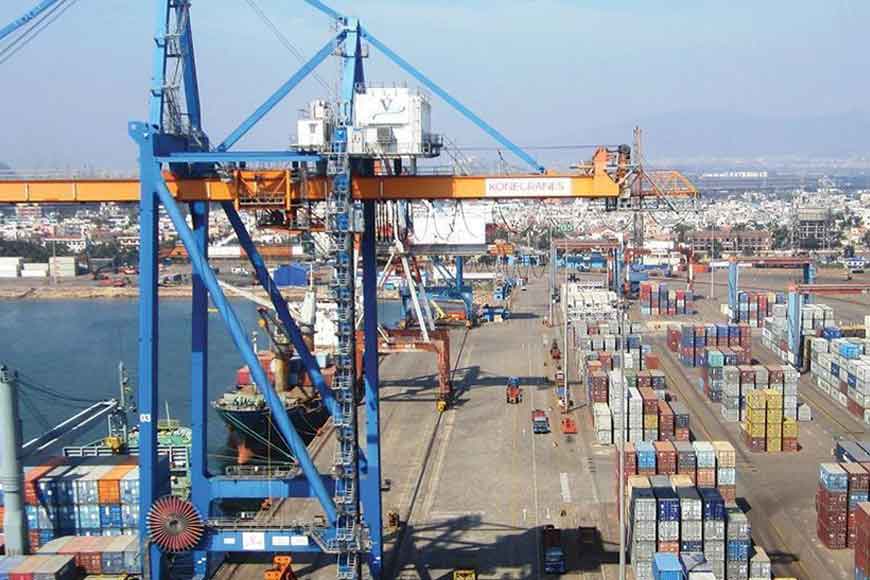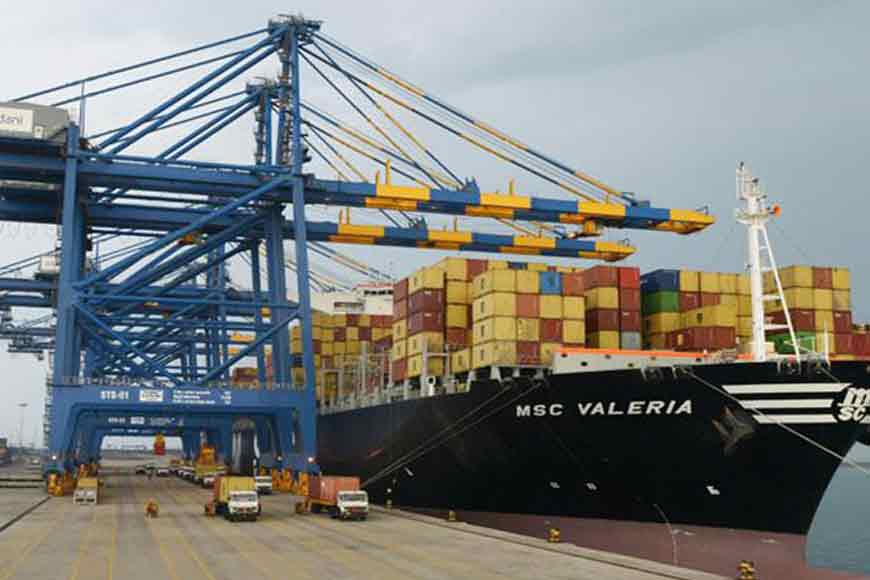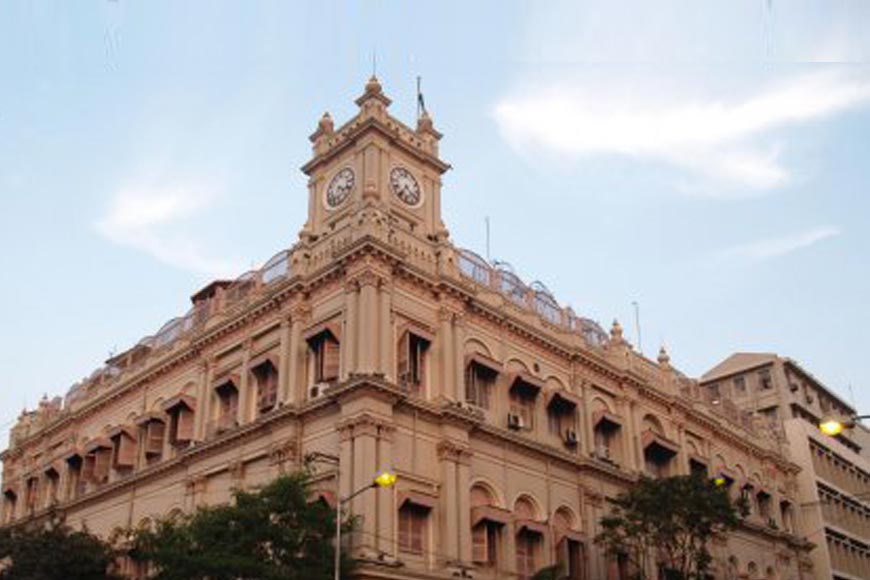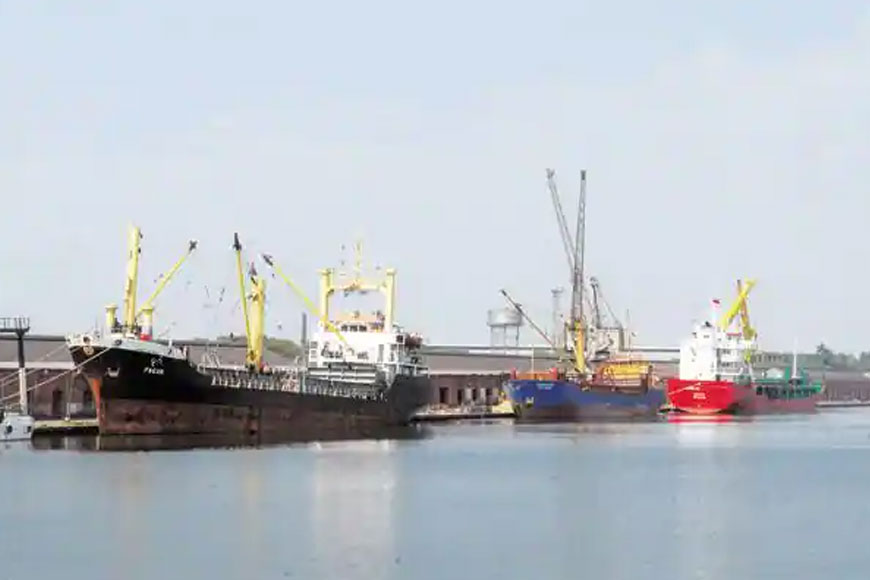Highest ever net surplus in a decade at Kolkata Port Trust

The oldest operating port in India, Kolkata Port Trust has recorded the highest ever net surplus this year post Lockdown compared to any other Indian ports. This port was constructed by the British and was originally set up as “Commissioners for the Port of Calcutta” in 1870. From British Raj to Independence, Calcutta Port has witnessed many upheavals over the past 150 years. As the ‘Gateway to Eastern India,’ this most important port still retains its predominance as the premier port for trade and commerce, serving the vast hinterland comprising the entire Eastern India including Bihar and East UP and the two land-locked Himalayan kingdoms of Nepal and Bhutan.
KoPT has recorded its highest ever net surplus in at least a decade in 2020-21, a year initially blighted by the unprecedented disruptions caused by the pandemic. Despite cargo traffic volume coming down 4.14 per cent, the port managed to log in a 7.3 per cent rise in revenue and a 26 per cent hike in surplus, backed by higher port charges, land revenue and new cargo and cost control measures.
After Independence, its importance decreased due to many factors like Partition of India, reduction in size of the port hinterland and economic stagnation in Eastern India. To add to its woes, being the only riverine port in the maritime circuit of the nation, the Port faced major challenges due to siltation and falling navigable depth. The other two ports in its vicinity that came up much later were the one at Tajpur with a depth of more than 12 metres and armed with modern cargo handling systems. Despite that KoPT recorded a high volume of cargo handling both at Kolkata and Haldia. The ports’ operational transparency which would make the cargo handling system more efficient and instill greater confidence amongst its customers happened. The thrust was laid on modernizing the entire system at the port.

All these measures are finally paying rich dividends. KoPT has recorded its highest ever net surplus in at least a decade in 2020-21, a year initially blighted by the unprecedented disruptions caused by the pandemic. Despite cargo traffic volume coming down 4.14 per cent, the port managed to log in a 7.3 per cent rise in revenue and a 26 per cent hike in surplus, backed by higher port charges, land revenue and new cargo and cost control measures. The authorities managed to keep all costs under check, despite the additional expenses to combat Covid-19, taking care of the workforce and keeping the operation going. The port also did well operationally and had it not been for the lack of thermal coal traffic, it would have ended the year with cargo growth.
Also read : The oldest port of India, Kolkata Port
Traffic handled by the 12 major ports, a barometer for the economy, were down 4.54 per cent to 672.6 million tonnes (mt) from 704.92mt a year ago. KoPT handled 61.33mt cargo, down from 63.98mt in the previous year, standing at fifth place in terms of cargo movement. The buoyancy in the iron and steel sector lifted the port out of sloth from September 2020 onwards. The import of coking coal — a key raw material for blast furnace operation in the steel mills — went up significantly as demand came back. Export of iron ore also bounced back after a few years, keeping the berths busy. The port also exported over a million ton of steel as the industry opted for overseas markets to beat the slackness in local demand.

During the winter, the port handled seven capsize vessels, the highest so far, at sandheads which are located at the high sea, for lighterage operations. Taking advantage of the 50 metre of natural draft, ships could carry 160,000 tonnes of coal, which were unloaded to smaller vessels and brought up the Hooghly River to Haldia and Kolkata. The Haldia operation also benefited from the increase in LPG penetration in the eastern and north-eastern states. The port handled about 5mt cargo, making it a major import hub for cooking gas in India.
This port was constructed by the British and was originally set up as “Commissioners for the Port of Calcutta” in 1870. From British Raj to Independence, Calcutta Port has witnessed many upheavals over the past 150 years. As the ‘Gateway to Eastern India,’

A combination of cost control and revenue boost shored up the port’s finances, which follows the accounting practice of trusts. The port management cut down overtime expenses by 30 per cent, squeezing the wage bill. Simultaneously, it earned higher revenue from land banks, apart from generation escalation in port related charges. Steel exports were more remunerative for the port too. The port also reined in two major expenses — pension obligation to 30,000 employees and dredging costs to keep the navigational channel usable. After moving all pensioners under the age of 75 to LIC’s annuity scheme, the port’s annual pension obligation has fallen to Rs 80 crore from Rs 200 crore a few years back. The dredging cost also stood at about Rs 300 crore in the last fiscal, three-fourth of which was borne by the Centre.










